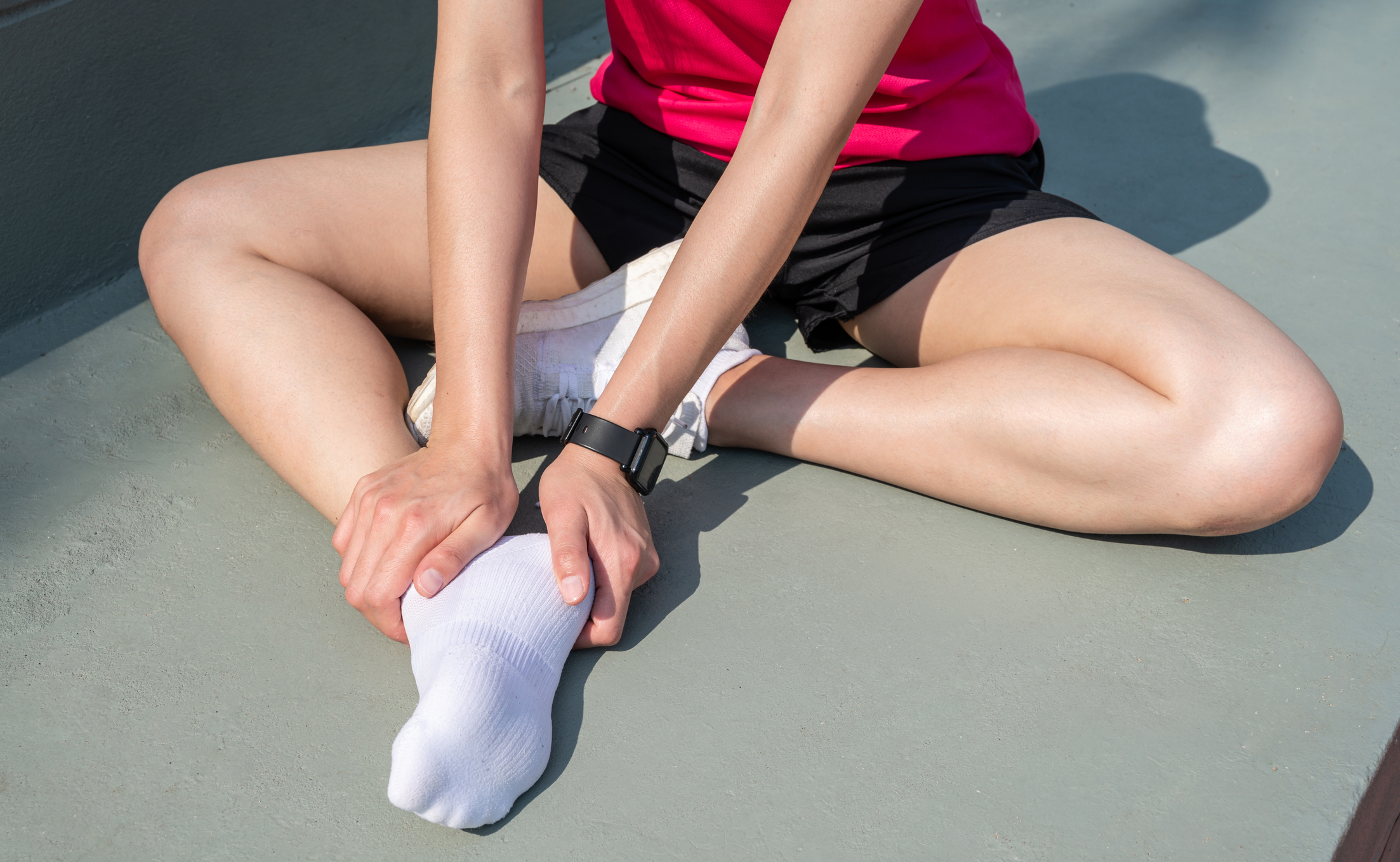
Maybe it’s that first step out of bed in the morning. Or it happens after a long run. Your heel hurts, and worse, the pain keeps coming back.
There is more than one culprit for heel pain. Summit Health Orthopedic Foot and Ankle Surgeon Steven Weinfeld, MD, discusses four possible causes of pain, how these conditions are diagnosed, and treatment options.
1. Plantar fasciitis
Plantar fasciitis is one of the most common causes of heel pain, says Dr. Weinfeld. The plantar fascia is the thick band of tissue on the bottom of the foot that connects the heel bone to the toes and supports the foot’s arch. Plantar fasciitis occurs when the plantar fascia becomes inflamed.
Dull or sharp heel pain is plantar fasciitis’s main symptom, and the pain is usually worse after being off your feet for a while or after activities such as running or jumping. “Plantar fasciitis is classically worse upon arising from sleep or after sitting for a period of time,” Dr. Weinfeld says. “Patients often have point tenderness along the bottom of the heel along the inner side.”
2. Insertional Achilles tendinitis
The Achilles tendon is the largest tendon in the body, connecting your calf muscles to your heel bone. Inflammation to this tendon results in Achilles tendinitis. Insertional Achilles tendinitis is a type of Achilles tendinitis distinguished by its location at the lower part of the heel where the tendon connects (or inserts) to the heel bone.
Common symptoms include discomfort at the back of the heel, especially in the morning, and tendon pain after physical activity.
3. Stress fracture
The heel bone, or calcaneus, is a large bone at the back part of the foot and an essential part of normal foot function. When tiny cracks form in the calcaneus—typically from overuse—the result is a stress fracture.
Stress fracture symptoms may include pain in the heel area that develops over days or weeks and swelling.
4. Bursitis
A bursa is a small, fluid-filled sac that reduces friction between tendons, muscles, and bone. When the bursa at the back of the heel bone becomes inflamed, the result is a condition known as retrocalcaneal bursitis. Like stress fractures, bursitis in the heel is often the result of overuse. Symptoms can include pain at the back of the heel while walking or running or when the area is touched.
How is heel pain diagnosed and treated?
“Heel pain usually starts without trauma,” Dr. Weinfeld says. “It should be evaluated by a doctor when there is associated swelling or pain that does not resolve within a few days.”
During an appointment, the doctor will review your medical history and perform a physical examination of your heel. An X-ray can help confirm a diagnosis, and in more complicated cases, an MRI may be necessary.
“It’s important to differentiate plantar fasciitis from a stress fracture of the heel, and this can be done using MRI,” Dr. Weinfeld says. “Heel pain should be carefully evaluated to determine the exact cause of the problem.”
In most cases, heel pain treatment involves nonsurgical options such as:
- Rest and avoiding activity that causes pain
- Applying ice to the affected area
- Nonsteroidal anti-inflammatory drugs (such as aspirin or ibuprofen)
- Stretching exercises
- Wearing supportive shoes or heel cushions
- Immobilization in a boot brace
- Physical therapy
Plantar fasciitis treatment may include a night splint, which stretches the plantar fascia while you sleep, or cortisone injections. Dr. Weinfeld notes, however, that cortisone injections are used cautiously due to the risk of heel pad atrophy as well as plantar fascia rupture.
Surgery may be recommended if pain doesn’t respond to conservative treatments, and recovery from surgery can take up to six weeks.
Can heel pain be prevented?
“Patients most at risk for developing heel pain are those who are overweight and those who are very active, such as runners, or do high-impact activity,” Dr. Weinfeld says. Although studies haven’t shown effective measures for preventing heel pain, he notes, some steps can be beneficial:
- Wear supportive shoes that fit properly and are in good condition.
- Take time to stretch before and after physical activity.
- Pace yourself—increase activity in moderation.
For at-home foot health tips, read our article Quarantine’s Effect on the Feet.
